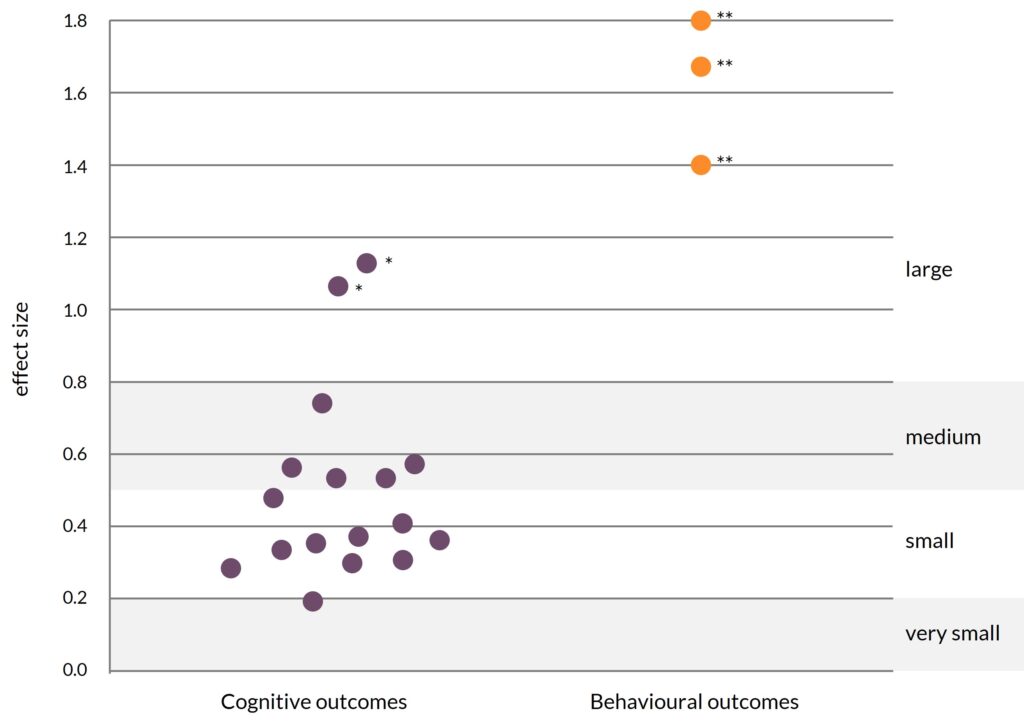If you follow discussions on social media or listen to conversations in university corridors, you could certainly get the impression that flipped classrooms are the quick, easy answer to any problem you might have in your teaching. However, recent studies draw a more differentiated picture.
The flipped classroom is not some new didactic principle or learning theory. In fact, it simply switches round the traditional sequence of the knowledge acquisition and knowledge processing phases. In traditional lectures and seminars, knowledge is acquired during a session that is held in person. Afterwards, the students do exercises and tasks on their own to consolidate what they have learned. The concept of the flipped classroom turns this approach on its head: first of all, students acquire a knowledge base individually by studying on their own with the help of video tutorials or texts, for instance. Subsequent to that, a phase of meeting in person as a group serves to dive into the subject matter more deeply. This approach promises numerous advantages: an individual learning pace, a higher degree of autonomy when learning, student-centred activities, the improvement of critical thinking, and increased motivation (Winter, 2018).
There are countless individual studies in recent years that have concerned themselves with analysing the effectiveness of this methodology more closely. There are also numerous meta-analyses which strive to provide an overview of the effectiveness of flipped classrooms. Hew, Bai, Dawson and Lo (2021) have now summarised the results of 19 different meta-analyses which were conducted in English. The studies included were carried out across all levels of education and all academic domains, with the focus lying on studies from the university domain. What is special about this is that in addition to the learning effects, the authors also highlight the conditions under which the flipped classroom is effective and the methodological quality of meta-analyses dealing with this subject.
Flipped classrooms achieve good learning effects
So as to mention the most important aspect from the outset: flipped classrooms can contribute to improving learning success. Using flipped classrooms meant that it was easier to achieve both cognitive and practical intended learning outcomes than in traditional learning environments. With effect sizes from 0.19 to 1.13, the effect of the learning method as regards cognitive intended learning outcomes predominantly lies in the medium range. With regard to practical skills (behavoural outcomes), there were even very large effect sizes reported (see Figure 1)

However, Hew, Bai, Dawson and Lo (2021) indicate that the extremely high values should be interpreted with particular caution:
- the two highest values for cognitive intended learning outcomes (marked * in the chart) come from Chinese studies. Here, the reason for the deviations could be alternative study designs or maybe also specific learning traditions.
- In the studies analysed, there is a high degree of overlap in the individual studies included. This could partly explain why the effect sizes found are quite close together.
- Overall, Hew, Bai, Dawson and Lo (2021) noticed several methodological weaknesses in the meta-analyses studied: in addition to ambiguities in the research design, there was only a marginal amount of grey literature included in the meta-analyses. It is plausible to assume that individual studies with high effect sizes are published more frequently than those with low ones. That means that the results of the meta-analyses could tend towards a positive bias.
Finally, it should also be added here that the three high values regarding the acquisition of skills (marked ** in Figure 1) stem exclusively from studies on nursing training. Based on this data, it is difficult to judge whether this would be transferable to other domains.
Not all designs are equally effective

To find out what variables affect learning success in a flipped classroom, the authors analysed characteristics in the didactic design, frame conditions, study design and types of publication.
Two aspects seem to play an essential role in creating successful learning environments here: 1. the use of formative assessments, and 2. a small group size.
- Flipped classrooms were particularly effective when the self-learning phase was rounded off with formative assessments. The invitation to test your own knowledge means that contents can be retrieved from memory again and thus be recapped (retrieval practice). At the same time, assessments of this kind are generally tied to feedback. That way, one of the instruments that is most effective is applied in order to support learning processes.
- The efficiency of smaller groups can be explained by the fact that supervision is more geared to the individual during the in-person processing phase. However, the possibility that the effects are obtained as a result of a methodological bias cannot be excluded here either: as a rule, studies with small random samples that do not obtain significant effects are not published as often.
Students’ assessments of flipped classrooms differ greatly
Five studies also analysed how students perceive their learning outcomes subjectively. The way learning success was defined differed greatly here. Accordingly, the picture revealed by the studies is also very inconsistent: depending on the criterion being measured, the students sometimes estimated the learning gain as being low, and sometimes high. What is striking is that the students’ satisfaction with the flipped classroom was only slightly greater than in traditional learning environments. Here, the effect sizes lie between g = 0.05 and g = 0.16.

As with traditional learning environments, not all students appear to work through the self-learning materials with the conscientiousness hoped for. Hew et al. (2021) cite studies according to which 39% to 70% of students skip the preparation phase.
And what about the lecturers?
For lecturers, designing flipped classrooms involves considerably more effort than holding traditional lectures or seminars. McKaughlin et al. (citing according to Hew et al., 2021) estimate that creating a flipped classroom and holding one for the first time takes 127% more time than would be required in traditional learning environments. Continuing to implement a flipped classroom also takes more than half the amount of time again (57%). Therefore, creating a flipped classroom requires a high degree of input and commitment from the lecturer.
Flipped or flopped? A preliminary conclusion
The concept of the flipped classroom is neither consistently defined nor completely new. In principle, it is a question of a form of blended learning where the customary process of knowledge acquisition and knowledge consolidation is retained. It is simply the organisational sequence of the in-person and self-learning phases which is swapped around. How the individual phases are structured here depends on the respective lecturer: the spectrum ranges from a recorded lecture with a session for questions afterwards to learning arrangements with sophisticatedly designed videos followed by a collaborative learning phase. The use of self-assessment and feedback revealed two essential impact factors that have already been tried and tested in traditional learning environments. Based on the meta-analyses, other essential aspects, such as the implementation of cooperative learning in the in-person phase, have yet to be addressed. One essential factor contributing to the success of the flipped classroom might also be the lecturers’ level of commitment, of course. As Jörg Loviscach (2021) pointedly phrases it: “Videos have an effect even if no-one’s watching” – if only because the enthusiasm for teaching and the appreciation of students is reflected in sophisticatedly designed teaching videos for the self-learning phases.
References
Hew, K. F., Bai, S., Dawson, Ph. & Lo, C.K. (2021). Meta-analyses of flipped classroom studies: A review of methodology, 33. https://doi.org/10.1016/j.edurev.2021.100393
Loviscach, J. L. (2021, 25. November). Videos wirken auch wenn niemand guckt [Vortrag]. Lehre verbindet NRW. https://www.youtube.com/watch?v=XBh0THVvyEk
Winter, C. (2018). Flipped Classroom. Infopool besser lehren. Center for Teaching and Learning, Universität Wien, Februar 2018. https://infopool.univie.ac.at/startseite/lehren-betreuen/flipped-classroom/
Suggestion for citation of this blog post
Hawelka, B. (2021, December 16). Flipped or flopped? The inverted classroom in university teaching. Lehrblick – ZHW Uni Regensburg. https://doi.org/10.5283/ZHW.20211216.EN

Birgit Hawelka
Dr. Birgit Hawelka is a research associate at the center for University and Academic Teaching at the University of Regensburg. Her research and teaching focuses on the topics of teaching quality and evaluation. She is also curious about all developments and findings in the field of university teaching.





